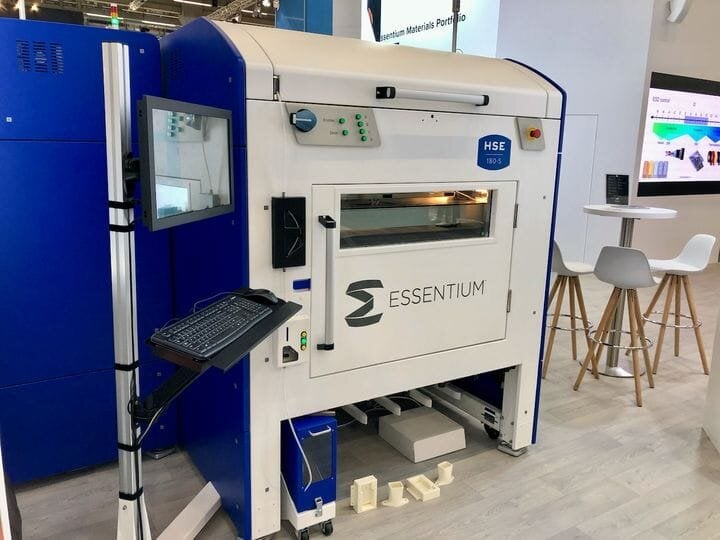![The Essentium HSE 180•S 3D printer [Source: Fabbaloo]](https://fabbaloo.com/wp-content/uploads/2020/05/image-asset_img_5eb08be3bb3ee.jpg)
A survey undertaken by Essentium reveals an overwhelming desire for open materials in 3D printing.
The release from Essentium says:
“The study reveals that virtually all (99%) manufacturing executives surveyed believe an open ecosystem is important to advance 3D printing at scale. While 85% of manufacturers reported that industrial-scale AM has the potential to increase revenue for their business; 22% said their 3D printing efforts have resulted in vendor lock-in that limits flexibility.”
This is one hand obvious, because open materials are typically less expensive for 3D printer operators, but there’s far deeper implications here.
Essentium says:
“The industrial AM market has been dominated by closed systems where customers are locked into vendors’ hardware, processes and materials.”
The Closed Material 3D Printer Strategy
This is true. The major 3D printer manufacturers, having secured patents for their respective processes, all employed the closed material strategy to maximize revenues. If you purchased one of their usually quite-capable devices, you were then obligated to use their materials only, usually at premium prices.
The counter argument is that by knowing the precise chemistry of the materials being used, the 3D printer manufacturer could finely tune the printing parameters to achieve optimal results. This is actually true, and is a feature usually of great interest to operations with limited ability or interest to experiment with print settings.
Essentially, you’re paying extra for reliability and consistency that you might not be able to achieve on your own. Many clients accept that compromise, and especially those in industries with high part costs, like aerospace or prototyping operations, where one-off prototype parts were traditionally quite expensive.
Closed Material Revenue Stream
This paradigm allows some 3D printer manufacturers to have long-term, reliable revenue streams. Imagine a client purchasing or leasing an expensive closed-material industrial 3D printer. The high cost of the device and associated equipment implies it will be written off over the course of several years. Thus the client is essentially committed, financially, to using the equipment for that length of time.
During that period they are required to buy their material from the vendor at premium prices, and this is the key point: regardless of whether the patent has expired. 3D printer manufacturers and their resellers with fleets of such machines in the field are guaranteed strong revenues for years for this reason alone.
This is the world of industrial 3D printing we live in today.
However, as 3D printers become more capable, they are being used increasingly for production purposes in a variety of industries. Indeed, several leading companies in the space are now targeting production manufacturing as their long term goal.
No doubt, they hope to carry that closed material paradigm forward into the monstrously huge production space and make a ton of money.
Closed Materials Finished
But.
The Essentium survey effectively says that strategy won’t work. In order to be competitive, large production manufacturers require open materials for differentiation, cost and scale.
While the argument that there is convenience and confidence of quality results using closed materials is effective with more casual operations such as prototyping, professional use and even consumer use, it won’t work at all with production manufacturers.
Manufacturers are well used to figuring out the best ways to produce their products using equipment and materials available. They don’t need handholding.
They want open materials.
3D Printer Manufacturing Strategy Changes
At this point the major 3D printer manufacturers mostly employ the closed material strategy, and it now seems that they may have to shift gears to achieve success at scale in the production manufacturing business.
It could also be that several up-and-coming 3D printer manufacturers whose equipment can use open materials may find themselves with a significant advantage in the production manufacturing market.
Via Essentium

